Abstract
Hemoglobin (Hb) proton spins rapidly equilibrate among themselves after an initial excitation, and relax toward thermal equilibrium as a unit. In the diamagnetic form, spin diffusion to nearby methyl relaxation sinks can account for this. For metHb, four strong heme relaxation centers dominate, and spin diffusion must occur over long distances. A sizeable difference in protein T1 is found between H2O and D2O solutions, much more than for diamagnetic Hb, consistent with internal H2O acting as a spin carrier to the heme.
Full text
PDF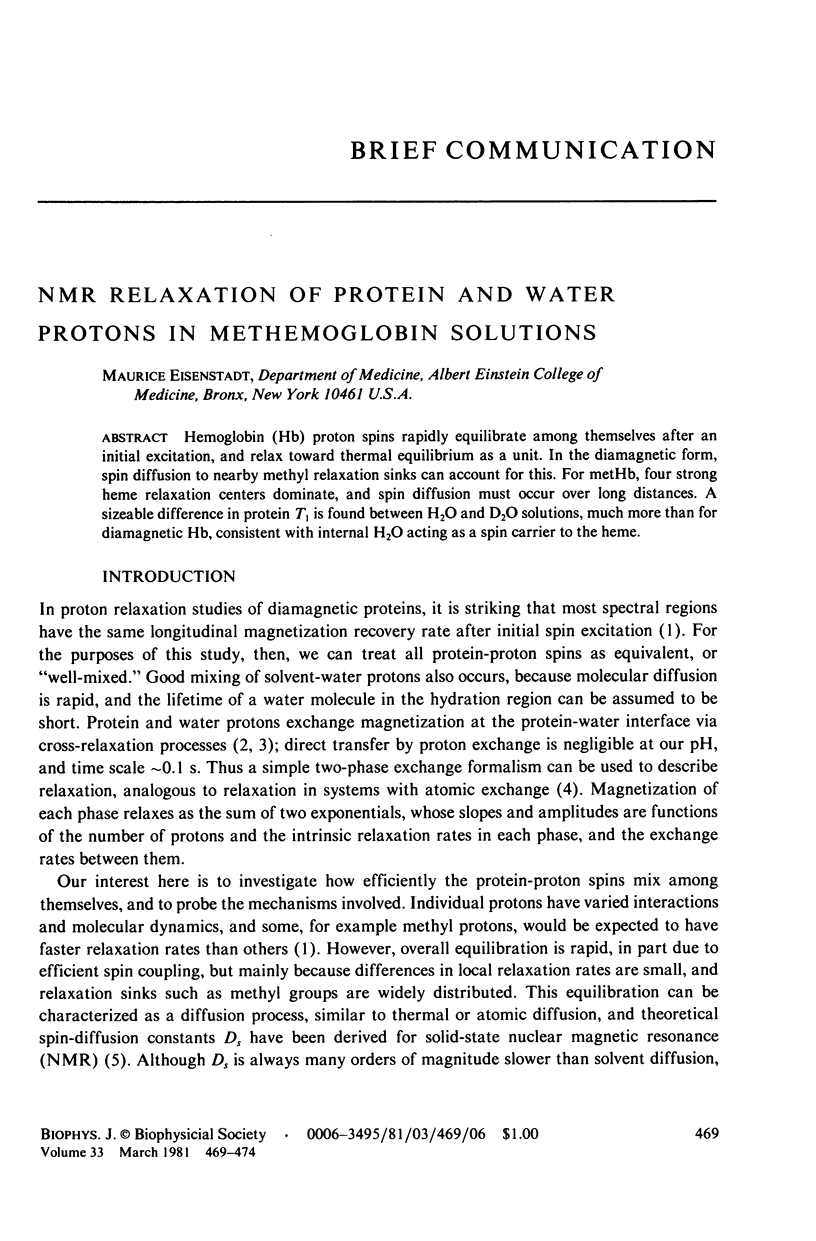
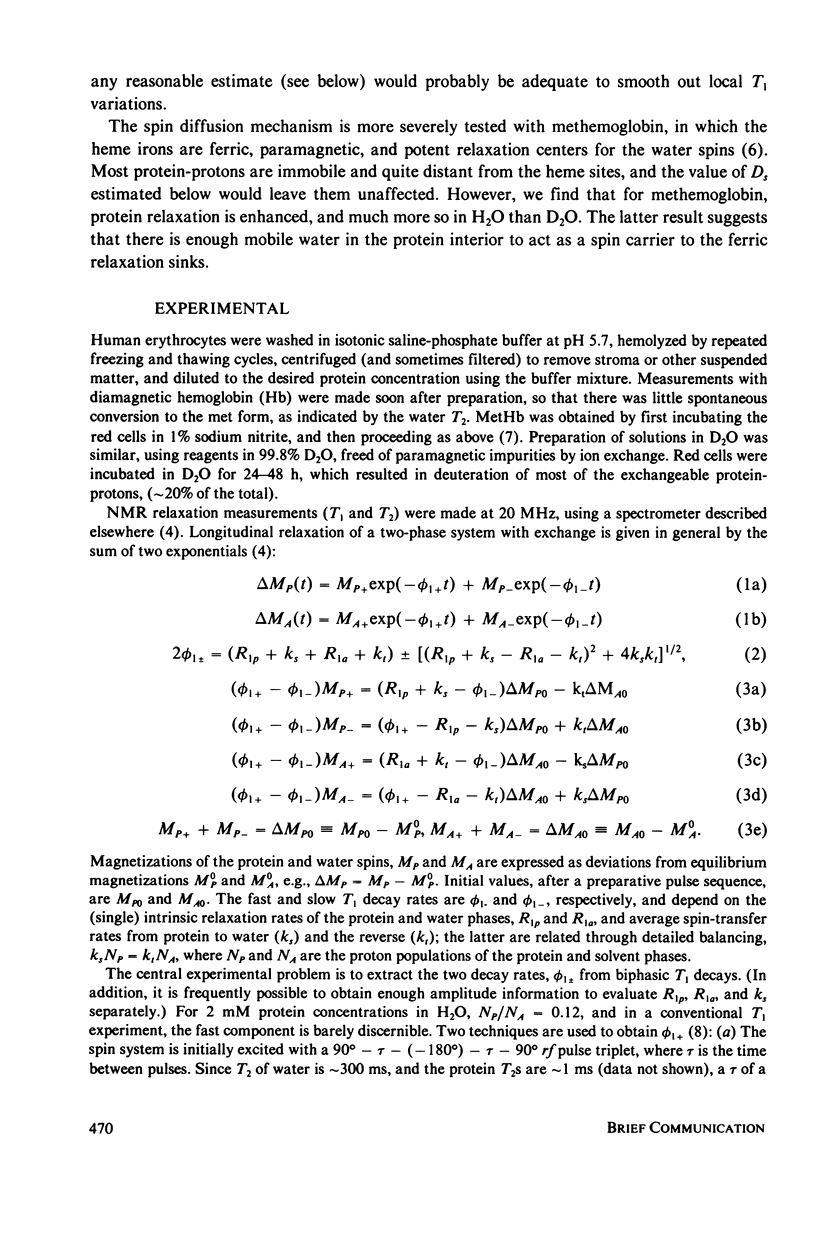
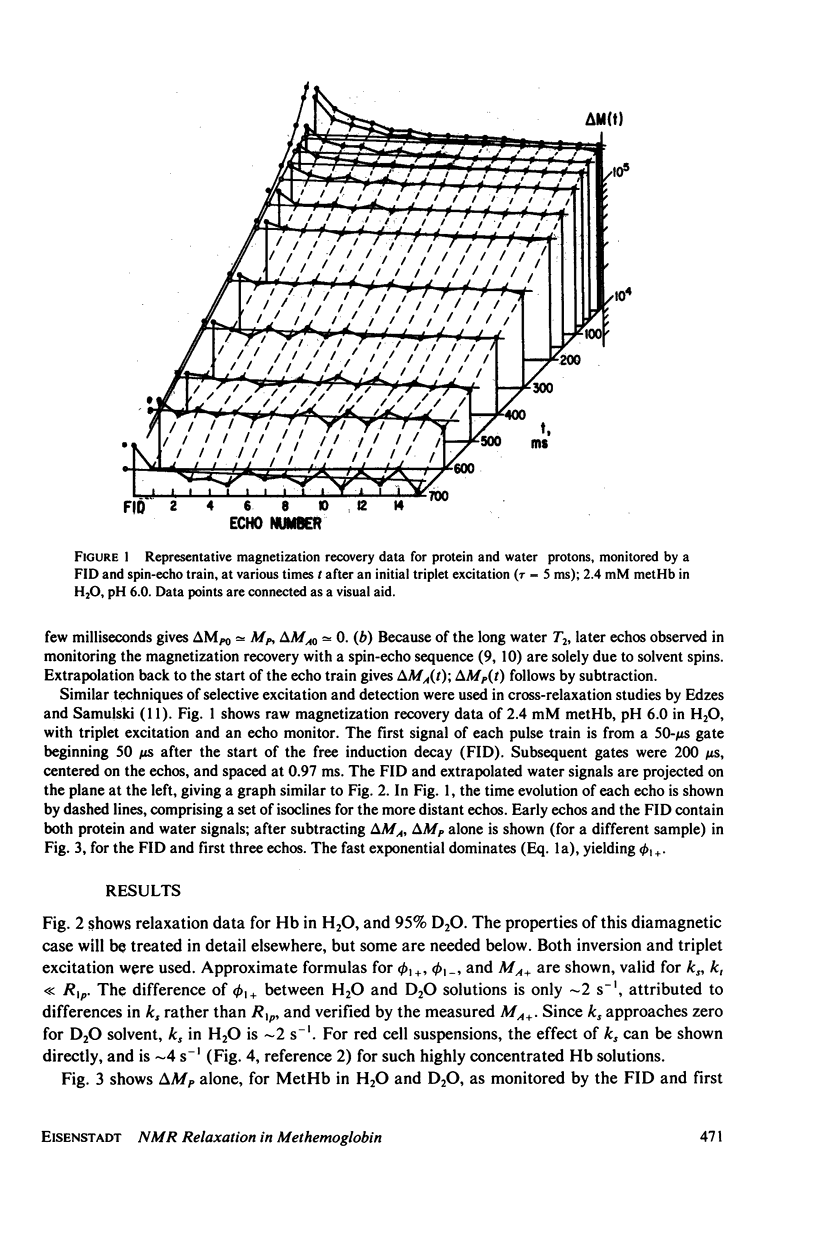
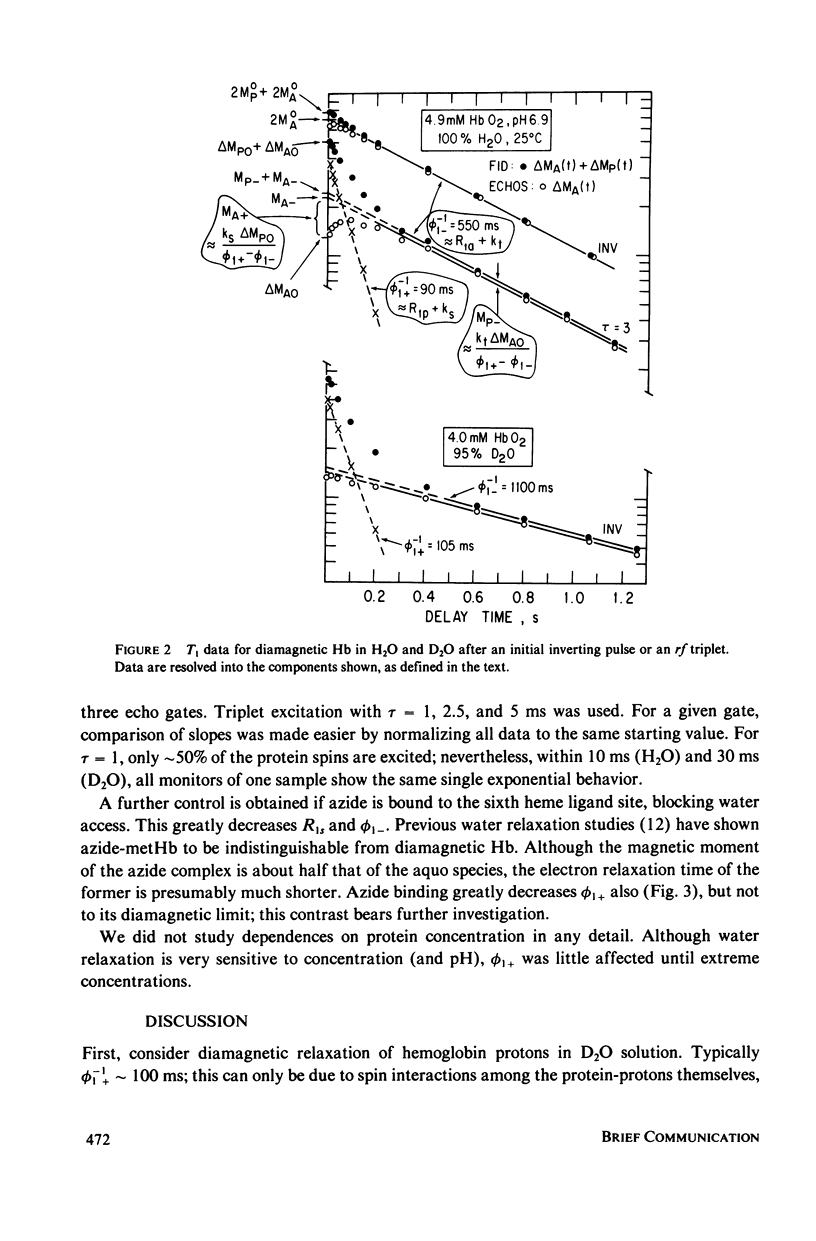
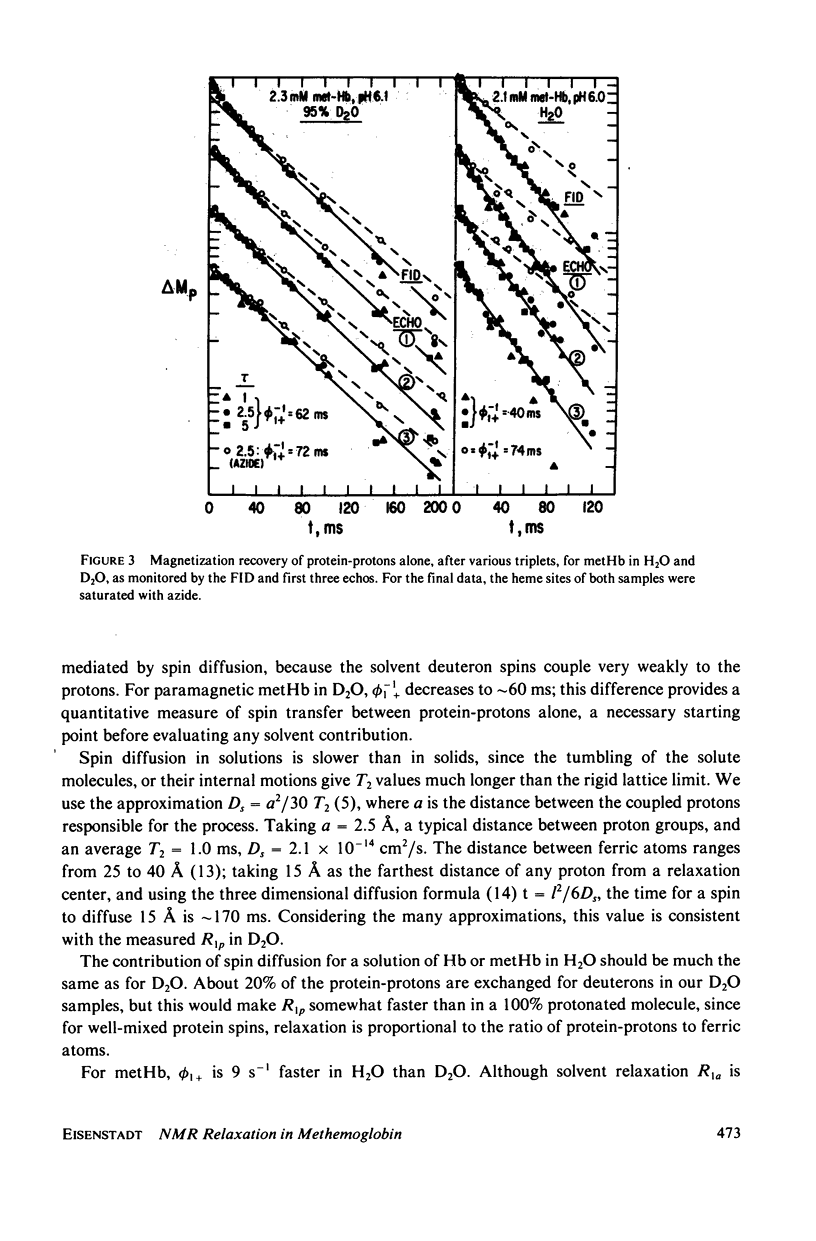
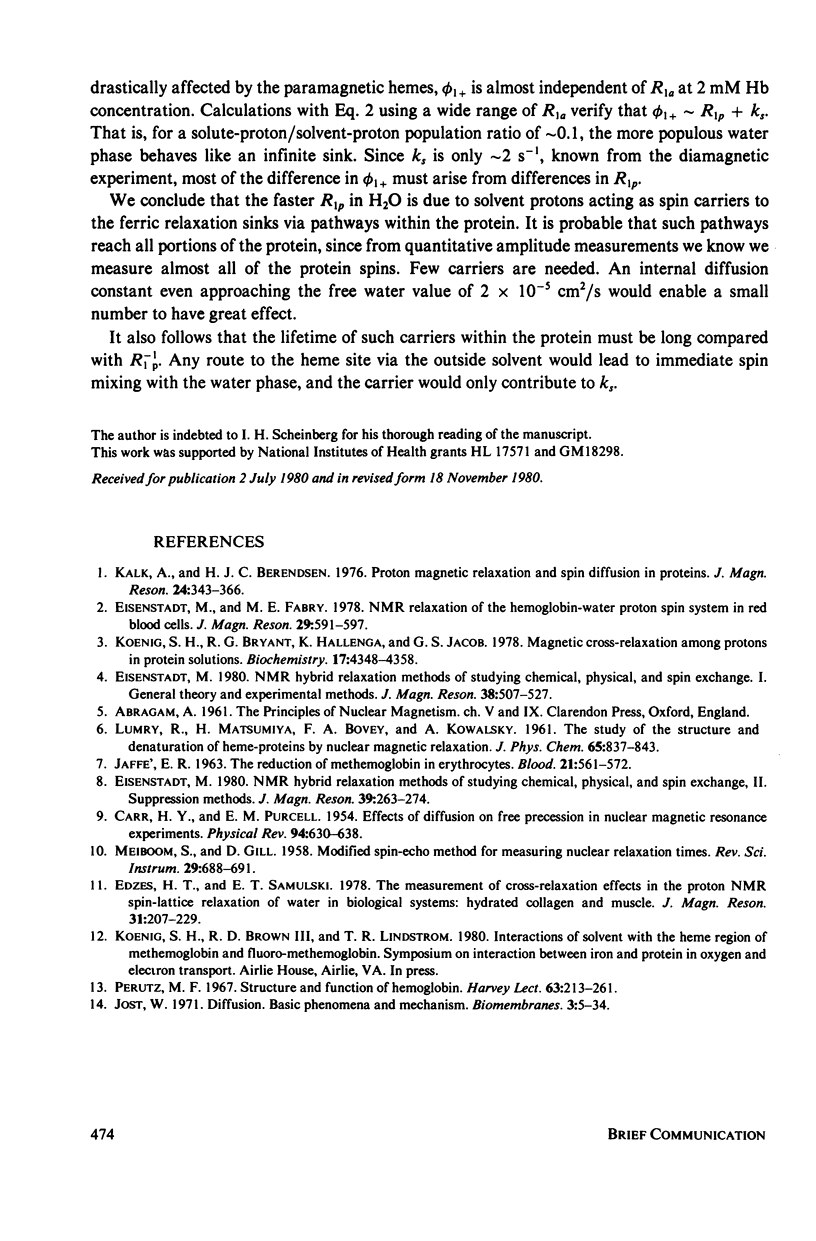
Selected References
These references are in PubMed. This may not be the complete list of references from this article.
- JAFFE E. R. The reduction of methemoglobin in erythrocytes of a patient with congenital methemoglobinemia, subjects with erythrocyte glucose-6-phosphate dehydrogenase deficiency, and normal individuals. Blood. 1963 May;21:561–572. [PubMed] [Google Scholar]
- Jost W. Diffusion. Basic phenomena and mechanism. Biomembranes. 1972;3:5–35. doi: 10.1007/978-1-4684-0961-1_2. [DOI] [PubMed] [Google Scholar]
- Koenig S. H., Bryant R. G., Hallenga K., Jacob G. S. Magnetic cross-relaxation among protons in protein solutions. Biochemistry. 1978 Oct 3;17(20):4348–4358. doi: 10.1021/bi00613a037. [DOI] [PubMed] [Google Scholar]
- Perutz M. F. Structure and function of hemoglobin. Harvey Lect. 1969;63:213–261. [PubMed] [Google Scholar]


